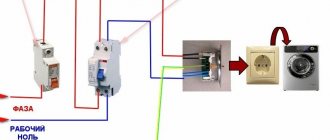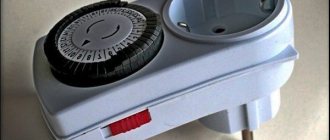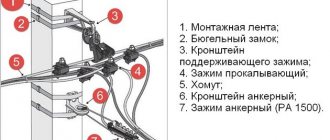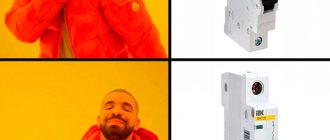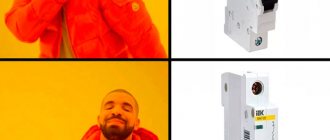Choosing the most suitable electric meter for your apartment is an important point. Both the service life of the device and the saving of your money depend on it. In addition, electricity meters are installed for a long period, usually from ten years, so you should make a responsible choice in order to avoid problems in the future.
Choosing the most suitable electric meter for your apartment is an important point. Both the service life of the device and the saving of your money depend on it. In addition, electricity meters are installed for a long period, usually from ten years, so you should make a responsible choice in order to avoid problems in the future.
What criteria must an electricity meter meet?
Before going to the store, you should determine the main points according to which you will choose an meter. Here are the main parameters by which you should choose a counter:
- type of device design;
- single-tariff or multi-tariff;
- number of phases;
- current indicators;
- instrument accuracy class;
- installation method;
- counter size;
- date of release of the device;
- intercheck interval.
Each of these points is important in its own way, and together they give the most complete picture of what kind of metering device you need.
Types and types of devices
Electric energy meters are divided into types and types according to different criteria. Among them: design, number of phases and tariffs.
Induction and electronic
Induction meters are familiar to everyone. Previously, they were everywhere; this type of device was developed a long time ago. It looks like a disk drive. Electricity passes through such a counter, a magnetic field is formed, and because of this, the disk produces revolutions. Each rotation of the disk is equal to a certain amount of electricity consumed. The main advantage of such a device is its reliability - they can work properly for up to thirty years! But there is also a big drawback: the measurement error is very high.
Electronic meters have appeared quite recently. They measure electricity consumption directly and can store or transmit data. Such devices are many times more accurate than induction devices and take into account the minimum load.
Electrical connection method
Based on the method of connecting to the power supply network, the following types of energy metering devices are distinguished:
- direct connection meters;
- transformer connection electricity meters.
The first scheme is considered the simplest. It has become widespread, including in residential buildings. The connection terminals are arranged according to a single standard. On the cover of the device there is a diagram of the connection to the network.
After connection, the device is sealed by a representative of the energy supplier organization. This allows you to prevent changes in the connection diagram, as well as any other interference in the operation of the equipment. Single-phase devices have two seals. One is installed on the housing mount to prevent its disassembly, the second is installed on the clamping cover. If equipment is dismantled for verification activities, additional seals may be installed to confirm suitability for use and the absence of unauthorized intervention. The second type of meters involves connecting to the power supply network through transformers. Such a device is more complex in design and is used in facilities with high electrical loads.
Technical characteristics of meters
Maximum current load
Electricity metering devices are divided into classes based on current strength. To choose the right one, it is worth considering the real energy needs. Single-phase meters typically have a current load range of 5 to 80 amperes. Three-phase can handle loads up to 100 amps.
Reference! Typically, meters with a range of 5-50 amperes are suitable for an apartment. If you still have doubts about the current load, consult a specialist.
Electric meter accuracy class
The accuracy class shows the maximum measurement error of the device. This indicator is established by law. The electricity meter in an apartment or house must have an accuracy class of no higher than 2.0.
Meters with an unsuitable accuracy class are no longer produced, so they cannot be installed. But if you already have a meter with a prohibited accuracy class (for example, 2.5), then you can use it until it breaks or reaches the end of its service life.
DIN rail or panel mounting method
Devices are also distinguished by installation method. Two versions of devices are available:
- With DIN rail mounting.
- With fastening with bolts to the panel.
You need to choose the type of fastener based on the cabinet or electrical panel where it will need to be installed. Old-style electrical panels use bolt-on mounting. In this case, the meter is secured with three screws; installation difficulties usually do not arise.
Which company to choose
Due to the fact that electric meters are installed for decades, you should buy the device from reliable manufacturers. In the future, this will avoid problems with equipment replacement, documentation and measurement accuracy.
In Russia there are three reliable manufacturers of electricity metering devices:
- Taypit (Neva);
- Inotex (Mercury);
- Energy meter.
All three are large companies with over 10 years of experience; experts recommend choosing devices from these companies.
Metrological aspects of electric power industry
Electrical energy has long and firmly entered our lives. Nowadays, the lack of access to electricity is considered an emergency.
Ensuring the uniformity of measurements for a huge fleet of measuring equipment is a complex task, the solution of which is carried out by tens of thousands of specialists working in various sectors of the national economy.
If we consider electricity as a product that is produced, transported, sold and consumed, then it should, by analogy with other products, be characterized by a set of parameters that most fully reflect its quality and allow its quantity to be determined quite reliably.
In Kazakhstan, these parameters are defined by GOST 13109-97 “Electric energy. Electromagnetic compatibility of technical equipment. Standards for the quality of electrical energy in general-purpose power supply systems", which establishes the following indicators of the quality of electrical energy:
— steady-state voltage deviation;
— amplitude of voltage change;
— flicker dose;
— distortion coefficient of the sinusoidal voltage curve;
— coefficient of the nth harmonic component of voltage;
— negative sequence voltage asymmetry coefficient;
— zero-sequence voltage asymmetry coefficient;
— frequency deviation;
— duration of voltage dip;
— impulse voltage;
— temporary overvoltage coefficient.
Currently, the fleet of instruments for measuring power quality indicators is just being formed; there are difficulties in gaining access to the necessary measuring equipment.
Today, when a huge amount of electricity is produced and consumed, even a small error in the accuracy of measuring its parameters, especially quantitative ones, entails significant economic losses.
The accuracy of measurements is determined by the technical capabilities of the measuring instruments used. Currently, a large number of different means for measuring electrical energy have been registered, especially electricity meters. On the one hand, this is good, since it is possible to select the desired device. On the other hand, there is a problem with their maintenance and reliability.
Another pressing problem, literally a “modern problem,” is the regulatory and metrological support of automated commercial electricity metering systems (ASKUE), which are currently being actively implemented. At the same time, there is no unified system of regulatory and metrological support for this activity.
According to the Law of the Republic of Kazakhstan “On Ensuring the Uniformity of Measurements”, measuring instruments intended for serial production or import into the territory of the Republic of Kazakhstan in batches and which are subject to state metrological supervision are subject to testing with subsequent approval of the type of these measuring instruments. The decision to approve the type of funds is certified by a certificate, the validity period of which is established upon its issuance. The approved type of measuring instruments is entered into the register of the state system for ensuring the uniformity of measurements.
The production, verification and repair of measuring instruments can be carried out by individuals and legal entities after receiving the appropriate license issued by the authorized state body for standardization, metrology and certification.
Measuring instruments subject to state metrological supervision are subject to verification upon release from production or repair. The list and frequency of verification of measuring instruments, as well as the procedure for its implementation, are determined by the authorized state body for standardization, metrology and certification. Positive verification results are certified by a verification stamp and a verification certificate.
TOP popular models
Let's look at the most popular models of electricity metering devices. All of them have the necessary certificates and licenses.
Single-phase single-tariff
Neva 103 1SO. Voltage 220-230 volts, current 5/60 amperes. Operates at temperatures from -40 to +60 °C. First class accuracy. Intervalidation interval is 16 years. This device is easy to install, as it is mounted using a DIN rail. The model is small in size, but the meter readings are easy to read - the numbers are clearly visible. The service life of such a device is up to 30 years.
Number of tariff modes
Based on the number of tariff modes, single-tariff and multi-tariff electricity meters are distinguished. It is recommended to install single tariffs if the region provides for energy consumption accounting at a single tariff. These are traditional devices that record the amount of electricity consumed without taking into account the time of day and other factors. That is, the cost of one kilowatt is always the same. The main advantage of such a meter is its affordable price compared to a multi-tariff one. Other advantages include:
- ease of installation and operation;
- reliability and trouble-free operation;
- absence of noise during operation;
- low own energy consumption;
- fairly high accuracy of readings;
- long service life, minimum maintenance and preventative measures.
Such devices are designed for a rated electric current of 5-6 Amperes, the maximum permissible load is 60 Amperes.
If electricity tariffs in the region depend on the time of day, weekends or holidays, it is recommended to install a multi-tariff device. This type has a number of advantages and provides significant savings. It has the ability to record energy consumption over a certain period of time. Pulsar equipment is capable of recording consumption at four tariffs in twelve seasons. Multi-tariff production meters are equipped with an integrated real-time clock with autonomous power supply from a lithium battery. The presence of our own software allows you to automatically adjust the time, which is important when calculating consumption in different tariff modes. For ease of use, an informative electronic display is provided. It displays a number of readings that allow the consumer to assess the current state of the power grid. An event log is maintained, data archiving for a certain time period. It is possible to transmit information remotely (there is an RS-485 digital channel).
Multi-tariff electricity meters "Pulsar" received other advantages:
- high measurement accuracy;
- the ability to connect to a PC and integrate into an automated centralized system for monitoring the use of energy resources;
- presentable design;
- convenient fastening elements, ease of installation;
- magnetic field sensor;
- the ability to install additional current measurement channels to prevent unauthorized use of energy;
- access to programming, presence of a liquid crystal indicator;
- long period of operation. Devices of this type last more than 30 years;
- display data even in the absence of power supply.
The cost of this type of devices is slightly higher compared to single-tariff ones. However, thanks to the savings on energy bills, it pays for itself in the shortest possible time. The more energy is used during the reduced tariff period (for example, at night), the shorter the payback period and the higher the savings.

